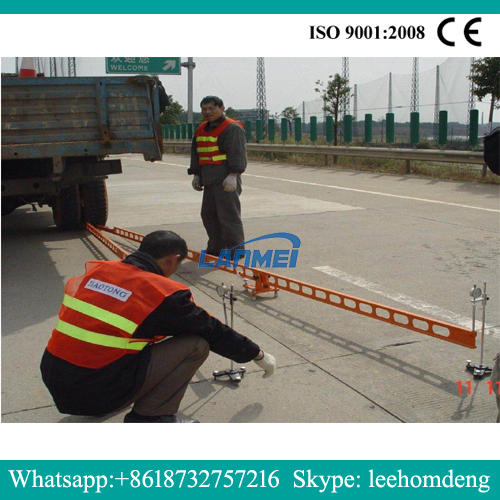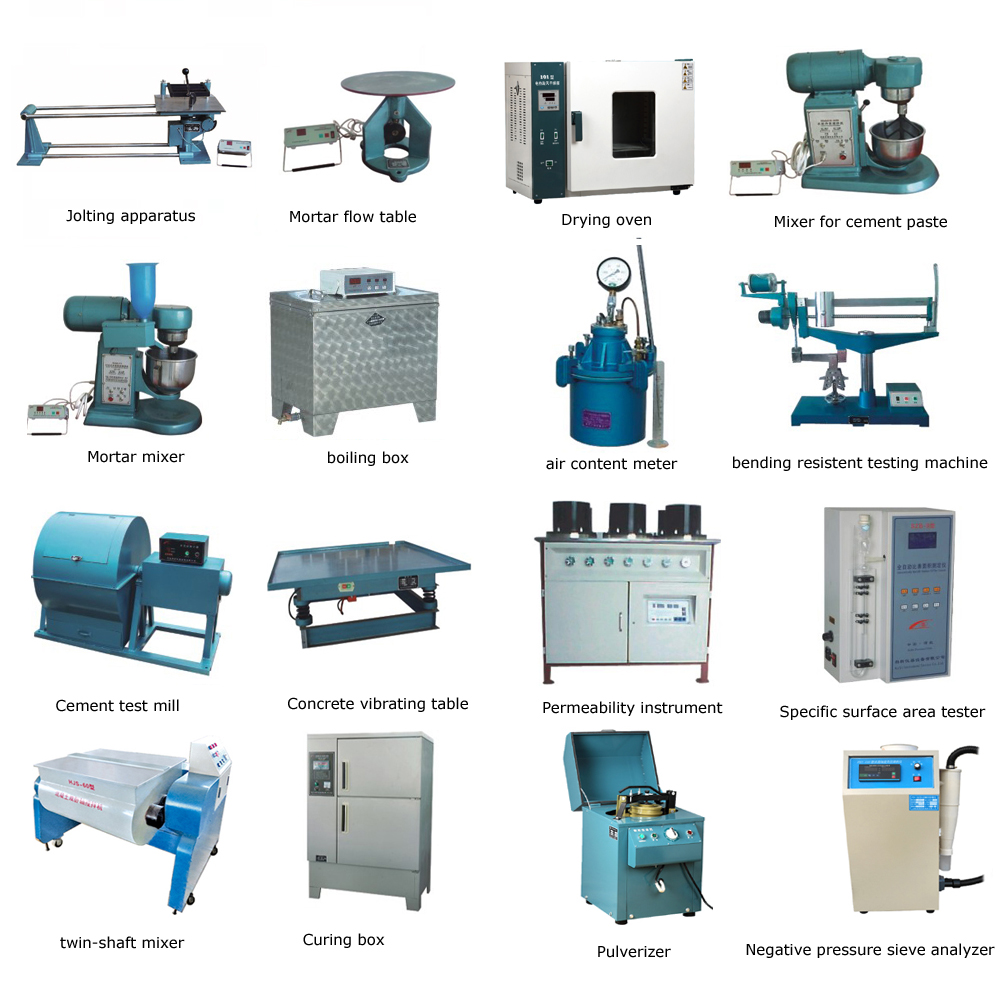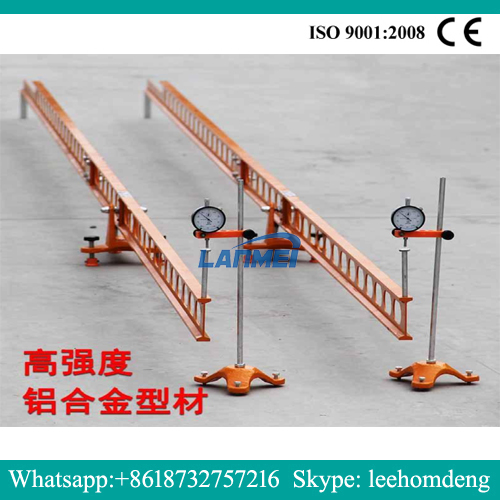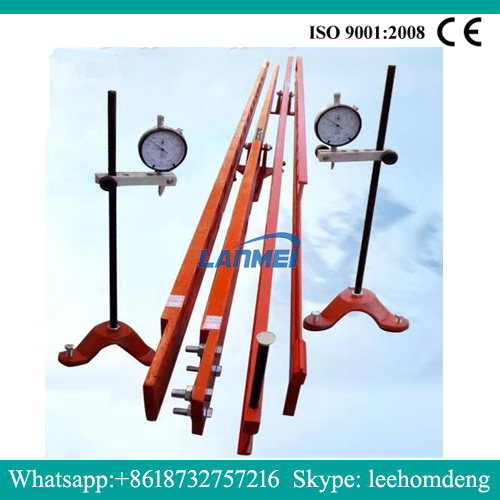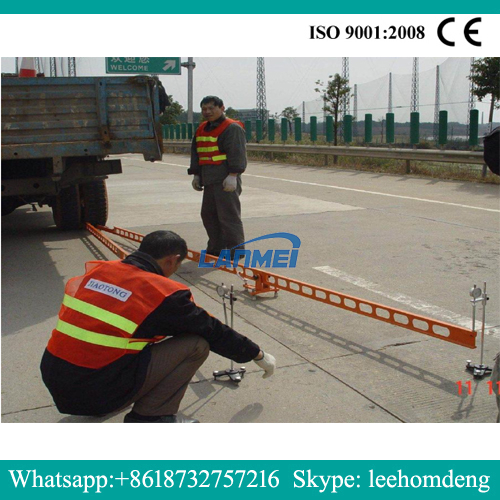Benkelman Deflection Beam/Beckman Deflection Instrument
- Product Description
Benkelman deflection beam/Beckman deflection instrument
The Beckman beam method is a method suitable for measuring the elastic deflection value of the road surface under static loading or very slow speed loading, and it can well reflect the overall strength of the road surface.
1) Preparations before the test
(1) Check and keep the standard vehicle for measurement in good condition and braking performance, and the tire inner tube meets the specified inflation pressure.
(2) Load (iron blocks or aggregates) into the car tank, and weigh the total mass of the rear axle with a ground balance, which meets the required axle load regulations. The axle load must not be changed during the driving and measurement of the car.
(3) Measure the tire contact area; use a jack to jack up the rear axle of the car on a flat and smooth hard road, spread a new carbon paper under the tire, and gently drop the jack to print tire marks on the graph paper , Use a planometer or counting square method to measure the tire contact area, accurate to 0.1cm2.
(4) Check the sensitivity of the deflection gauge dial indicator.
(5) When measuring on an asphalt pavement, use a road surface thermometer to measure the temperature and road surface temperature during the test (the temperature changes throughout the day and should be measured at any time), and obtain the average temperature of the previous 5 days (the daily maximum temperature and the minimum daily temperature) through the weather station. Average temperature).
(6) Record the materials, structure, thickness, construction and maintenance of the asphalt pavement during construction or reconstruction.
2) Test steps
(1) Arrange the measuring points on the test section, the distance of which depends on the test needs. The measuring points should be on the wheel track belt of the road traffic lane and marked with white paint or chalk. (2) Align the rear wheel gap of the test vehicle at a position about 3 ~ 5cm behind the measuring point.
(3) Insert the deflection gauge into the gap between the rear wheels of the car, consistent with the direction of the car, the beam arm must not touch the tire, and the deflection gauge probe is placed on the measuring point (3 ~ 5cm in front of the center of the wheel gap), And install the dial indicator on the measuring rod of the deflection gauge, adjust the dial gauge to zero, tap the deflection gauge lightly with your finger, and check whether the dial gauge returns to zero stably. The deflection meter can be measured on one side or on both sides at the same time. (4) The examiner blows the whistle to command the car to move forward slowly, and the dial indicator continues to rotate forward as the road surface deformation increases. When the watch hands move to the maximum value, quickly read the initial reading L1. The car is still moving forward, and the hand turns in the opposite direction: After the car drives out of the deflection radius (above 3m), blow a whistle or wave a red flag to command the stop. Read the final reading L2 after the watch hands rotate stably. The forward speed of the car should be about 5km/h.

